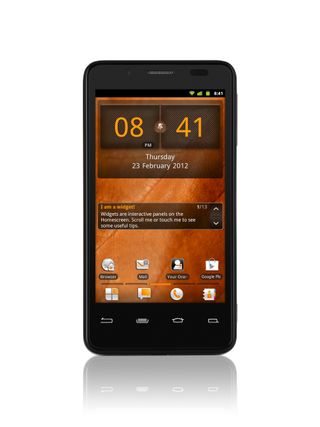IT Pro Verdict
Intel has delivered a solid product in conjunction with Orange. The high performance is offered at a mid-range price and the battery life is up there with other Android. Even the lack of business apps can be fixed with a quick trip to the Android Market.
Intel has been touting the high-performance and all-day battery life of the San Diego as major selling points. We put the handset to the test to see if the firm has managed to roll out a device which is suitable for business users.
Performance
The San Diego features an Atom Z2460 processor which has a single Saltwell core running at 1.6Hz. This is combined with PowerVR's SGX540 graphics core, 877MB RAM and 16GB of internal storage. On paper this looks like a good combination for a phone with a mid-market price.
Benchmarks results for the San Diego were mixed. The SunSpider's Java test showed the device is able to render pages in a rapid-fire 1526.8ms. This is faster than the Qualcomm-based dual-core HTC One S (1846.9ms) and even the One X (1977.9ms), which is powered by NVIDIA's quad-core Tegra 3 processor. The results help to back up Intel's claims that high-performance in the mobile space can be achieved without using multiple cores at this time.

Intel has incorporated its Hyper-Threading technology allowing the San Diego to equal performance of high-end smartphones
We were surprised when the Geekbench app which benchmarks processor and memory performance returned a lowly score of 324, which is almost 200 below the 100 Huawei Ascend G 300's 520 score.
Although Geekbench suggests there are processing pitfalls, in real world testing we experienced no performance issues. The phone was responsive when carrying out demanding tasks such as browsing full desktop sites. Intel's Hyper-Threading technology usually kicks in to deliver a boost in performance when running multiple apps and when using the internet or watching videos.
The San Diego also features Bluetooth 2.1, GPS and supports NFC. Although uses of NFC are limited at this time, users will have the ability to make use of it when infrastructure is in place.
Disappointingly, the device ships with Android Gingerbread 2.3.7. There should be an upgrade to version 4.0 (Ice Cream Sandwich) before the year is out, but there is no guarantee and the process of upgrading over-the-air isn't always the smoothest. By the time ICS rolls out, Android 5.0 Jelly Bean could be on the market, which doesn't make it ideal for users looking to stay up-to-date.
